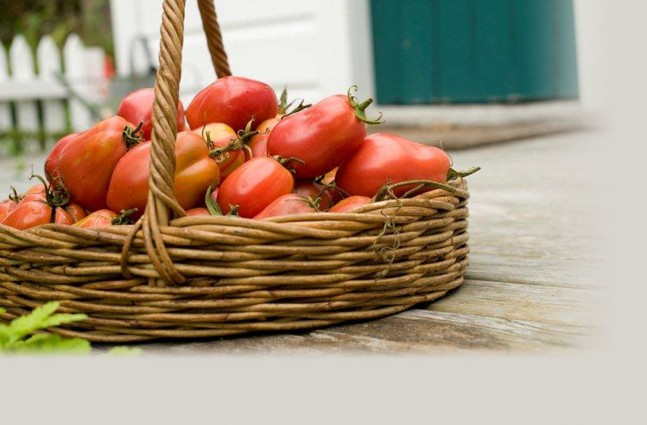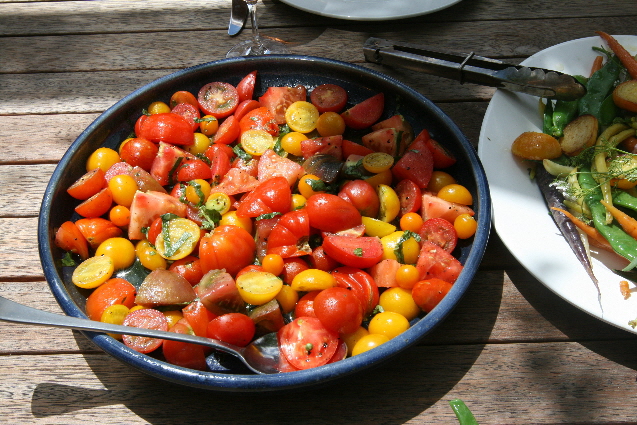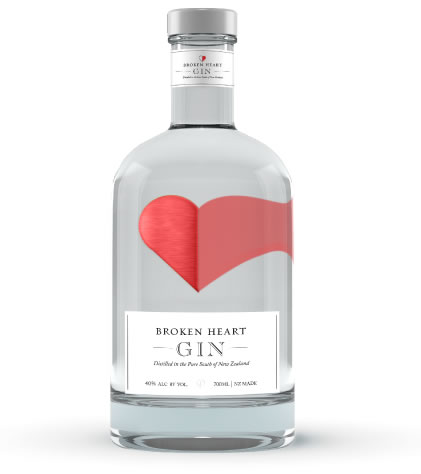Having recently spent a few weeks on holiday in Wellington, New Zealand, I can report that we now know where the best Afghan biscuits are baked, and where the most incredible tomatoes and awesome Gin can be had—all of which have a fascinating history or story.
Beginning with the Afghan biscuit, despite its name, originated in New Zealand, although nobody really knows exactly when, where or how it came into being but it has appeared several times in the countries constitutional cookbook, ‘The Sure to Rise Cookbook – Edmonds Cookery Book’ first published 1908.
The popular theory is these biscuits were first sent to the soldiers fighting in the Second Afghan War in the late 19th century, presumably baked by the wives of New Zealand soldiers serving the British Empire. There is no proof of this, however I reckon there is a ring of truth in it if you consider the Afghan biscuit could have been the precursor to the more famous ‘Anzac Biscuit’, baked by Australian and New Zealand wives and sent to soldiers in World War I.
Interestingly, both these biscuits contain cereal; cornflakes in the Afghan and rolled oats in the Anzac, and neither have egg in the recipe, making them less likely to spoil during transportation, in those days a long naval journey. You have to appreciate that the contents and recipe of these biscuits have most likely changed over the last 100 years as much as the stories have been embellished with the Anzac biscuit now very much a commercial success and a powerful emblem of remembrance for the fallen—‘lest we forget’.
The Afghan biscuit however has remained much more a home bake, although you will find it in bakeries and cafes throughout New Zealand. The basic recipe calls for flour (Edmonds of course), butter, cornflakes, sugar and cacao powder, topped with chocolate icing and half a walnut. I think we can assume the original biscuit destined for the Afghanistan front did not have the icing or the walnut.
The interesting part here, in terms of timeline, is corn flakes was invented in 1894, 14 years after the Second Afghan War, by the Seventh-Day Adventist and superintendent of The Battle Creek Sanitarium in Michigan, Dr. John Harvey Kellogg, as part of a strict regimen for his patients, which also included no alcohol, tobacco, or caffeine, as detailed in Wikipedia.
And the plot thickens—with the New Zealand Company, Sanitarium, and its beginnings—when a certain Edward Halsey, a Seventh-day Adventist and baker trained at the Battle Creek Sanitarium, arrived in New Zealand, December of 1900. The first Sanitarium cafés opened in March 1902 in Pitt Street, Sydney, Australia and in 1907 in Auckland’s Victoria Street, with “the overriding aim to introduce people to a better way of living through vegetarian meals and cooking lessons”, which must have gone down well with the sheep farmers at the time!

Afghan Biscuits
Now I am not disputing that New Zealand housewives were at the cutting edge of biscuit recipe development around the late 19th century, and maybe it was actually the Third Afghan War (1919) that the Afghan biscuits first came about, on the back of the Anzac biscuit.
Or maybe the first Afghan biscuits actually contained rolled oats, like the Anzac biscuit, which would certainly be more in keeping with the strong influence of the early Protestant, Presbyterian Scottish immigrants in New Zealand. Maybe the rolled oats in the Afghan biscuits where changed over the course of time to cornflakes, to differentiate them from Anzac biscuits?
Perhaps it will remain a mystery, however if there are any food historians out there who know of the very first Afghan biscuit recipe and how it came about, PLEASE share with us. And after all that, the reason for writing on Afghan biscuits; we visited the school that our daughter will be attending soon in Wellington, Queen Margaret College, incidentally established in 1919, the year the Third Afghan War started.
We arrived around midday, to which the schools head of enrolment had procured three Afghan biscuits baked in the school canteen, without the walnut as the school is nut free, and I might add, the largest Afghan biscuits I have ever encountered, moreover the most delicious in memory—actually when I think about it, it’s probably been over 30 years since I have eaten one!
But you never forget the taste and texture of an Afghan biscuit, it’s in our (New Zealanders) DNA; the dark, almost burnt chocolate flavour and moist, fudge-like texture and these were particularly moist and dense, the chocolate icing all gooey and practically a meal (lunch) in itself—definitely the best Afghan biscuit I have ever had. Makes me want to go back to school.
So, there you have it, the Afghan biscuit in all its glory and mystery. If you want to try baking them yourself, follow this time-honoured recipe by Edmonds, click here. And I think I might get legendary New Zealand Chef, Ruth Pretty, to knock us up a batch next time we visit…which leads me to my next story.
We stayed with Ruth and Paul Pretty (again) on this visit, spending some quality time with her on an inspection of their vegetable and herb garden, to which I found of particular interest, her much treasured tomato tunnel greenhouse and outdoor patch with an incredible crop of Isle di Capri tomatoes.
Ruth is completely besotted with these tomatoes and I can understand why, as you walk in the tunnel greenhouse, you are hit with this most intoxicating perfume that instantly reminded me of the tanginess and herbaceous aromas of sauvignon blanc, along with a potent aroma of basil that is planted under the tomatoes, and a mingling scent of Marigolds, which she has planted throughout her garden and especially around the tomatoes as they repel the pest Tomato Hornworm.
Actually Pot Maragold’s (Calendula) are not only an excellent companion plant for your vegie patch, the flower petals are edible as well, and their bright orange colour make for wonderful sight, both in the garden and on the plate.
This powerful melange of perfumes wafts in the breeze as you approach the tomatoes and has proven to be a most attractive smell (and taste) to the local Pukeko’s to which the greenhouse has required extra fortification and security.

Ruth Pretty’s Isle of Capri Tomatoes
That evening Ruth served up some of her Isle di Capri tomatoes in a salad, thickly sliced with wonderful Zany Zeus creamy feta and freshly chopped basil sprinkled on top, then drizzled with extra virgin olive oil and the very best balsamic vinegar—which is a dish of the most extraordinary flavour and texture. In Ruth’s words, “This is the meal I would ask for if I were about to be hanged.”
I totally agree, and even my 10 year-old daughter, who does not normally eat raw tomatoes willingly, also agrees and cleaned up the whole plate—at first I thought it was her liking for feta cheese, but she declared “I have never tasted a tomato like this, a tomato that tasted so sweet and so good!”
These Isle di Capri tomatoes are instantly recognisable by their dense red flesh, that is the flesh is totally bold red throughout, and as the fruit has only three seed chambers instead of the usual four, it has a firmer, meaty texture. The mouth-filling fleshiness and juicy succulence of this flesh and its invigorating sweet/sour tanginess (actually it’s almost as tangy and similar in savoury flavour to a Tamarillo/Tree Tomato), combined with its salty, umami (Ripe tomatoes are rich in umami components) and sour bite of the balsamic and equally salty and creamy Zany Zeus feta, along with the teasing aroma and flavour enhancing fresh basil all keeps you coming back for more…and more.
In terms of wine pairing, most would instantly say this dish is screaming out for a sauvignon blanc—a Marlborough Sauvignon Blanc with its tantalizing balance of zesty fruit and racy acidity—and you would be right. We tried it, with a Villa Maria Clifford Bay Reserve—no brainer!
But we also tried it with a slightly chilled, soft and relatively light/supple (read fine tannins) and juicy 2012 Marlborough Pinot Noir from Jules Taylor which went brilliantly. Actually, I would say this is one of the most unique uncooked tomato dishes that you would consider pairing with a red wine; that is pinot noir, and I even picked up on some dried tomato and Tamarillo nuances in the Jules Taylor—it really was an impressively complex and most enjoyable pairing.
Having discovered (actually rediscovered) such a wonderful tomato, I was obviously inquisitive as to its origins and Ruth told me she first came across them many, many years ago through the Italian community in Turangi, yes of all places. As the story goes, the Italian tunnellers that migrated in great numbers to work on the hydroelectric Tongariro Power Project, in the middle of the North island of New Zealand, immediately planted their own crops of tomatoes and the Isle di Capri was the tomato of choice.
Work began on this project and more specifically the Tokaanu underground power station around the mid-1960s and went through to late seventies, to which I have a personal knowledge of this as I lived in Turangi as youngster, which had a population of 300 then, but surged to 3000!
My stepfather was a carpenter on the power project and when we moved from Wanganui to Turangi I started at Tongariro Primary School and was the only Pākehā in the class, the school completely dominated by the local Māori at the time. As much as we easily assimilated into this local culture, I was soon joined by some Italian children with quite a number of migrant families arriving, who found it bit more challenging to acclimatize, and I soon found myself ‘adopted’ by this new Italian community.
Curiously, as I began to write this article, the buried memory and taste of the Isle di Capri tomato came back to me and I remember as a kid, we ate these tomatoes like they were a fruit; well they are technically a fruit, but it was the sweetness and dense, fleshy juiciness that made them as good eating as a nectarine or peach.
I am sure our Italian community introduced us to all sorts of civilized cooking and eating as much as my ‘bushman’ stepfather coached them on hunting and gathering the local wild deer, goats, mushrooms, and the most prolific of all then, freshwater trout.
Digging a little further, I came across an online article by David Burton on the ‘Cuisine’ website, “Attack of the Killer Tomatoes”, where he reported the Isle di Capri was first brought to New Zealand, specifically the South Island coastal town Nelson, around 1950 by a fisherman from Capri, Enrico Federico. Judging by the popularity of the said tomato and evidence of its cultivation, one could deduce that our Italian tunnellers up in Turangi, who no doubt placed a good deal of importance on finding a real tomato, sourced their seeds from these original Nelson plantings.
This brings up the subject of ‘Heirloom Tomatoes’, or ‘Heritage Fruit’ as it is designated in New Zealand, Australia and the UK, and the more specific criteria of ‘Family Heirloom’ where the tomato seeds have been passed down for several generations through families. There are also ‘Commercial Heirlooms’, tomato varieties that have been in circulation for more than 50 years, and ‘Created Heirlooms’ by crossing two known parent heirlooms, and then there is ‘Mystery Heirlooms’, that are a product of natural cross population.
It is likely that our New Zealand Isle di Capri is a genuine ‘Family Heirloom’, and will remain such as they are not really suitable for commercial growing, being thin skinned and low cropping, thus pretty much unviable for supermarkets or transporting.
And there folks, is the crucial difference with a tomato that tastes wonderful, and a tomato that tastes…well, does not really have much taste at all, and its pulp dry and fibrous. Back here, in Singapore, we have a whole new breed of new tomatoes called ‘Tragic!’ The tomatoes here are woeful, flown from all parts of the globe (and possibly First Class judging by the price) and invariably reared on water (hydroponics) with about as much taste as Evian and never been outside in its life, little lone open-pollinated.
New Zealanders actually have it pretty good when it comes to buying different types of heirloom tomatoes. That said, a chef friend of mine who recently returned from a trip to South America on the trail of heirloom potatoes and tomatoes came back delirious and talking of Pandoran and finding a whole new planet of tomatoes and potatoes!

Nigel Greening’s zero food miles heirloom tomato salad
Obviously a home-grown tomato is always going to taste better. And speaking of home grown, I suddenly have this vivid memory of my last visit to Felton Road vineyard in Bannockburn, Central Otago, where proprietor, Nigel Greening, was in top form and cooked lunch with a with an amazing heirloom tomato and freshly picked beans salad and his legendary goat curry, with all the ingredients coming from his garden and property, and that includes the goat (from his African mountain goat herd) and the wine!
He proudly says, “We eat very local here. Forget your ‘100-mile diet’, the only thing that comes through this gate, is the glass wine bottles.” Greening is a leading practitioner of organic and biodynamic viticulture—the nucleus of biodynamics is understanding and continuously observing and learning about the ecosystem and biodiversity of your property as a whole, adapting and developing solutions to enhance your agriculture or viticulture without any pesticides, herbicides or artificial fertilisers—to which he delivered a brilliant speech to the World Climate Conference; it is compelling reading – click here.
Sorry I digressed a bit there; back to Ruth Pretty’s tomatoes. The next time we are there I must do a taste test between the tomatoes grown in the greenhouse and those grown outside, as I recall asking her about this but have forgotten the answer. And it will give me an excuse to write another 2000 words on tomatoes.
Should you want to grow your own tomatoes, I would highly recommend you go that extra distance to source genuine heirloom seeds, and try experimenting with a number of varieties. Ruth Pretty’s gardener Clare will be saving seeds to grow Isle of Capri plants to sell later in the year, in their very tiny garden shop next door to the kitchen shop, if you would like to be notified when the plants are ready email shop@ruthpretty.co.nz
I have to say, I am not much of a spirits drinker, apart from a fine and old Armagnac or Cognac, and the occasional Islay Malt Whiskey, to which a must-read is Andrew Jeffords brilliant book, “Peat Smoke and Spirit”.
That said, we do have the occasional gin and tonic, living in tropical Singapore, it does seem rather civilized as a welcomingly refreshing aperitif when guests arrive for dinner, all hot and sweaty. We usually add a squeeze of fresh lime from our Mexican Lime tree, gives it that extra bit of zing.
I did actually discover a rather fascinating gin whilst in New Zealand, called Broken Heart Gin and distilled “In the Pure South of New Zealand”, in Queenstown.
One of partners in this venture, Annie Robertson, had corresponded on sending a sample bottle of her gin to me in Singapore, to which I suggested she could send it to the hotel we would be staying at in Wellington, The Museum Arts Hotel, our favourite place to stay, and as the names suggests full of wonderful contemporary art.
Actually, it’s one of the coolest and most relaxing hotels I know, very low key, no fuss or formalities, friendly staff and a great central city location, just across the road from Te Papa Museum and a five minute walk to Oriental Bay.

Broken Heart Gin, from the Southern Alps of New Zealand
I had also suggested that sending the gin would be a good idea, not only saving on all the airfreight and duties, but I would share the bottle with the proprietor of the Museum Art Hotel, Chris Parkin, and General Manager, Kathy Tipler, who we have come to know through mutual friends and being regular guests there.
And that we did, putting it to the test with them making simple gin and tonics, and I must say, it passed the test well—not that I am an expert on spirits or gin & tonics, but this certainly seemed like the real deal.
As the story goes, Broken Heart Gin began as the folly of two German’s living in New Zealand’s Southern Alps, Joerg Henkenhaf, who was a pilot, and Bernd Schnabel, an engineer. Having bought a vineyard in Gibbston valley, Henkenhaf began making grappa and schnapps from the waste grape skins, which is common amongst European wineries.
Meanwhile, Schnabel had been garage distilling for some years, which came to the attention of Henkenhaf and he approached Schnabel on collaborating to make a ‘London Dry’ style gin using a traditional recipe of spring water and eleven herbs.
They formed their friendship around a still and “a passion for perfecting spirits of rare complexity and fine flavours.” It took over three years for the project to come to fruition, but sadly, Schnabel died before they realised their dream.
Schnabel’s partner, Annie Robertson, who was good friends with Henkenhaf, decided to continue with the project and name their gin ‘Broken Heart’ in memory of Schnabel and the process of healing a broken heart that they had both gone through.
I am not sure how Broken Heart Gin compares on an international scale; that is against all the big brands and companies that have been making gin for a very long time, sometimes centuries. I did have a gin & tonic recently, using the famous Scottish gin, Hendricks which has been around since 1860, and one assumes, the pureness of the Scottish Highlands water is key to its quality. From memory, the Broken Heart Gin tasted just as good as the Hendricks and it would be fair to say, the pureness of the water and pristine environment of New Zealand’s Southern Alps is a match to Scotland, or anywhere on this planet.
One thing’s for sure, gin has been steadily increasing in popularity in bars and nightclubs, and I know from my trips to Australia that locally made gin’s are all the rage with the latest and greatest being the Melbourne Gin Company. With New Zealand’s lively nightlife scene and its British heritage, one would guess that the gin & tonic is going through a renaissance along with all the new and fashionable cocktails that hip and groovy mixologists are concocting.
There was of course a time when gin was so popular in London, it became a huge social problem, so much so that in 1751 the Gin Act was passed in the Parliament of Great Britain to reduce the consumption of spirits, as depicted in two prints ‘Beer Street and Gin Lane’ by English artist William Hogarth, designed to be viewed alongside each other, they depict the evils of the consumption of gin in contrast to the merits of drinking beer. (source Wikipedia)
These days were are far more responsible in our drinking (right?) and it’s purely a social lubricant…and for mending broken hearts.

Beer Street and Gin Lane, two prints issued in 1751 by English artist William Hogarth
|
|
Tweet |






One comment to Afghan Biscuits, Isle of Capri Tomatoes and Broken Heart Gin | Comments Feed
Hi Curtis,
thank you for your great comments on our Gin.
i share your comment that our Gin can stand next to big brands.
recently while i was traveling in Germany i went for lunch in a old typical restaurant. to my surprise they had a tomato soup with Gin on their menu. of course i had to try this and i was surprised how well the flavors combined. reading this article with the tomatoes reminded me of this experience.
Best regards Joerg Henkenhaf
The comments are closed.